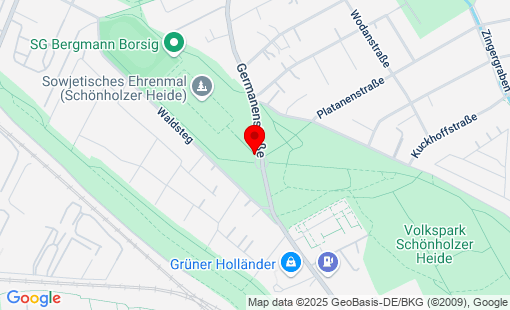Germany
Berlin-Pankow, Sowjetisches Ehrenmal Schönholzer Heide
The Soviet memorial in Schönholzer Heide was built between 1947 and 1949 on an area of 2.8 hectares and opened on November 7, 1949. The complex was designed by the Soviet group of architects Konstantin A. Solovyov, M. D. Belaventsev, V. D. Korolyov and the sculptor Ivan G. Perschudchev. From the end of the 19th century, Schönholzer Heide was a popular excursion destination, but during the National Socialist tyranny it was the site of the second largest forced labor camp in Berlin, the "Luna Camp". Around 13,200 (including 120 women) of the approximately 80,000 Red Army soldiers who fell in the final phase of the Second World War and Soviet prisoners of war who died were buried on the grounds of the memorial. This makes the Schönholzer Heide memorial not only the third, but above all the largest Soviet memorial in Berlin. The integration and mention of prisoners of war on a plaque is a special feature, as under Stalin prisoners of war were seen as potential collaborators; many liberated returnees had to endure reprisals or even further imprisonment in the Soviet Union. Only around ¼ of those buried here could be identified; their names are immortalized on 142 grave plaques. The memorial was significantly renovated between 2010 and 2013 (Martin Bayer, 20.04.2020)
